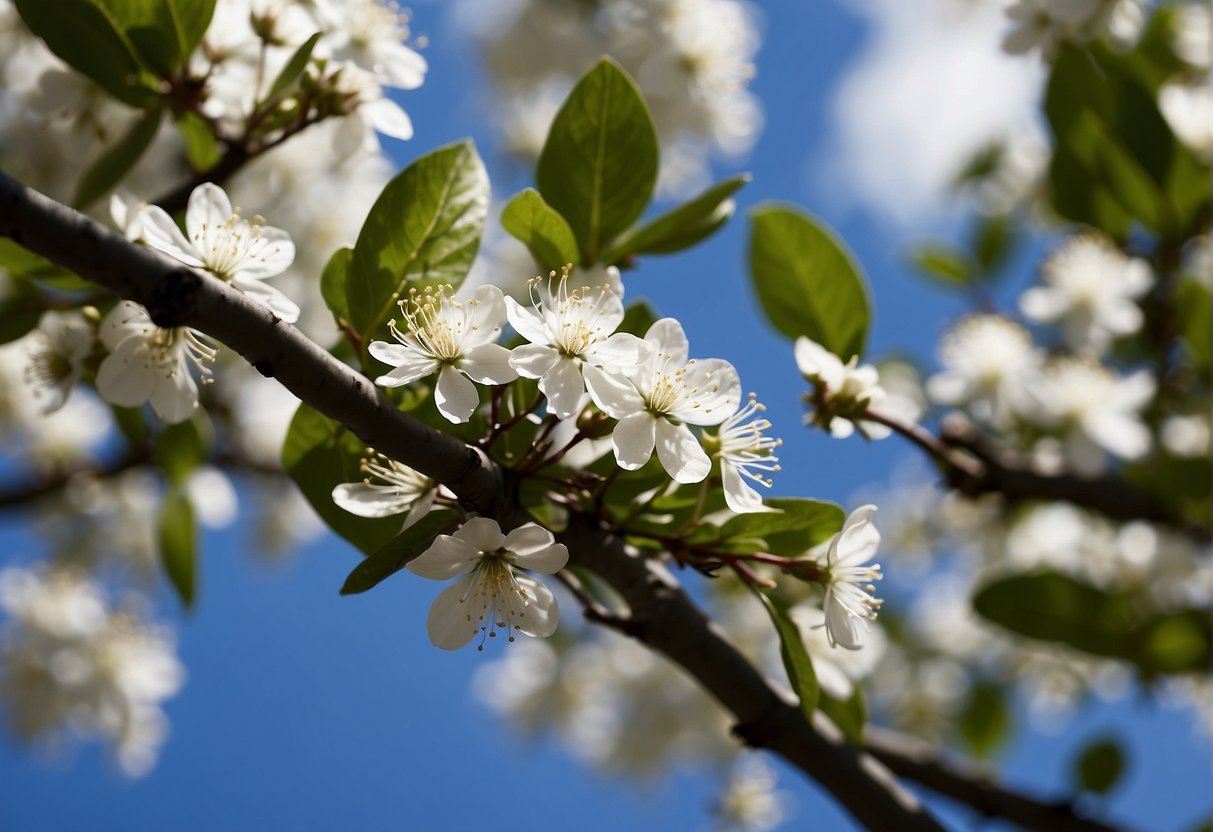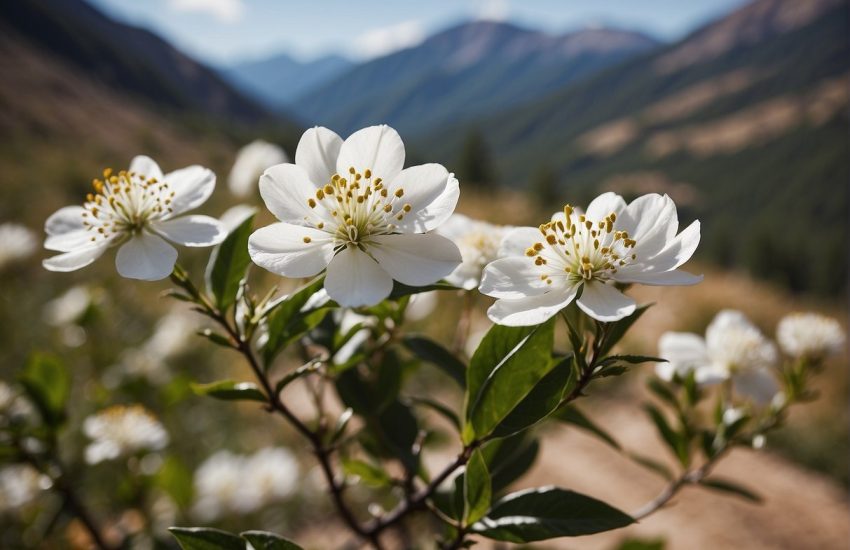White Flowering Trees in Florida: A Guide to the Most Common Species
Florida is known for its beautiful and diverse flora, and one of the most stunning sights to behold are the white flowering trees that bloom throughout the state. These trees are a popular choice for landscaping and gardening due to their elegant appearance and ability to thrive in Florida’s warm and humid climate.

One of the most iconic white flowering trees in Florida is the dogwood tree. The dogwood is a small to medium-sized tree that produces clusters of delicate white flowers in the spring. These flowers have four petals that form a cross shape, which has led to the tree’s association with Christianity. The dogwood is a popular choice for landscaping due to its attractive flowers and foliage, as well as its ability to attract birds and other wildlife.
Another popular white flowering tree in Florida is the magnolia tree. Magnolias are large, evergreen trees that produce large, fragrant white flowers in the spring and summer. These trees are often used for shade and ornamental purposes, and their flowers are a favorite of bees and other pollinators. Magnolias are also known for their glossy, dark green leaves, which make them an attractive addition to any landscape.
Popular White Flowering Trees in Florida

When it comes to white flowering trees in Florida, there are several popular options to choose from. These trees not only add beauty to the landscape but also provide shade and shelter for wildlife. Here are some of the most popular white flowering trees in Florida:
Southern Magnolia
The Southern Magnolia (Magnolia grandiflora) is a classic evergreen tree that is known for its large, fragrant white flowers. This tree is a popular choice for landscaping due to its year-round foliage and stunning blooms. The Southern Magnolia can grow up to 80 feet tall and 40 feet wide, making it a great shade tree for larger properties.
Flowering Dogwood
The Flowering Dogwood (Cornus florida) is a deciduous tree that produces showy white flowers in the spring. This tree is a popular choice for smaller landscapes due to its compact size, reaching up to 30 feet tall and wide. The Flowering Dogwood also provides fall interest with its colorful foliage.
White Redbud
The White Redbud (Cercis canadensis f. alba) is a deciduous tree that produces clusters of white flowers in the spring. This tree is a great choice for adding a pop of color to the landscape. The White Redbud can grow up to 30 feet tall and wide, making it a great choice for smaller landscapes.
Overall, these white flowering trees are great choices for adding beauty and interest to the landscape. Whether you prefer evergreen or deciduous trees, there is a white flowering tree that will fit your needs.
Caring for White Flowering Trees

White flowering trees can add a touch of elegance and beauty to any landscape in Florida. However, to keep them healthy and thriving, proper care is essential. This section will provide some essential tips on how to care for your white flowering trees.
Soil and Sunlight Requirements
White flowering trees require well-drained soil and full sun to partial shade. It is essential to choose the right location for planting your tree. The soil should be moist and slightly acidic to ensure healthy growth. Before planting, make sure to test the soil pH level and amend it if necessary.
Watering and Maintenance
Watering is crucial for the growth and health of white flowering trees. They need regular watering, especially during the first few years of growth. Water the tree deeply at least once a week, and more frequently during hot and dry weather. Mulching around the base of the tree can help retain moisture and prevent weeds.
Pruning is also essential to maintain the shape and size of the tree. It is best to prune your white flowering tree during the dormant season to avoid damaging the tree. Remove any dead or diseased branches, and thin out the canopy to allow for better airflow and sunlight penetration.
In conclusion, caring for white flowering trees in Florida requires attention to soil, sunlight, watering, and maintenance. By following these tips, you can ensure that your white flowering tree will thrive and add beauty to your landscape for years to come.
Wildlife and Ecosystem Benefits

White flowering trees offer many benefits to the ecosystem and wildlife in Florida. In this section, we will explore how these trees attract pollinators and provide shade and shelter.
Attracting Pollinators
White flowering trees are known to attract a variety of pollinators, including bees, butterflies, and birds. These pollinators play a crucial role in the ecosystem by helping plants reproduce. Bees, in particular, are important pollinators for many crops and wildflowers.
By planting white flowering trees, gardeners and landscapers can help support local pollinator populations. This, in turn, can help maintain healthy ecosystems and ensure the continued production of crops and other important plant species.
Providing Shade and Shelter
In addition to attracting pollinators, white flowering trees also provide shade and shelter for a variety of wildlife. Birds, for example, often use trees as nesting sites and for protection from predators. Trees also provide shade for animals and humans alike, helping to regulate temperatures and reduce the need for air conditioning.
For gardeners and landscapers, white flowering trees can be a great way to add beauty and functionality to their outdoor spaces. These trees offer a range of benefits, from attracting pollinators to providing shade and shelter for wildlife and humans alike. Whether you are looking to create a beautiful garden or maintain a healthy Florida landscape, white flowering trees are a great choice.
Choosing the Right Tree for Your Landscape
When it comes to choosing the right white flowering tree for your Florida landscape, there are several factors to consider. The following subsections will provide helpful information to guide you in making the best decision for your needs.
Tree Size and Growth Habits
One of the first things to consider when selecting a white flowering tree is the size and growth habits of the tree. Tall trees such as the Southern Magnolia can reach up to 80 feet, while medium-sized trees like the Dogwood typically grow to around 20-30 feet. For smaller spaces, dwarf trees such as the Japanese Snowball or the Dwarf White Fringe Tree may be more suitable.
It’s also important to consider the growth rate of the tree. Fast-growing trees like the Silverbell or the White Fringe Tree can quickly provide visual appeal and shade, while slower-growing trees like the Crape Myrtle offer a more manageable growth rate.
Seasonal Considerations
Another important factor to consider is the seasonal characteristics of the tree. Evergreen trees like the Southern Magnolia provide year-round greenery, while deciduous trees like the Dogwood offer seasonal interest with their changing foliage colors.
When it comes to white flowering trees, fragrant flowers can add an extra layer of appeal to your landscape. Trees like the Sweetbay Magnolia or the Japanese Snowbell offer fragrant blooms in the spring and summer months.
In summary, selecting the right white flowering tree for your Florida landscape involves considering factors such as tree size, growth rate, and seasonal characteristics. By taking these factors into account, you can choose a tree that will provide visual appeal and meet your specific needs.


